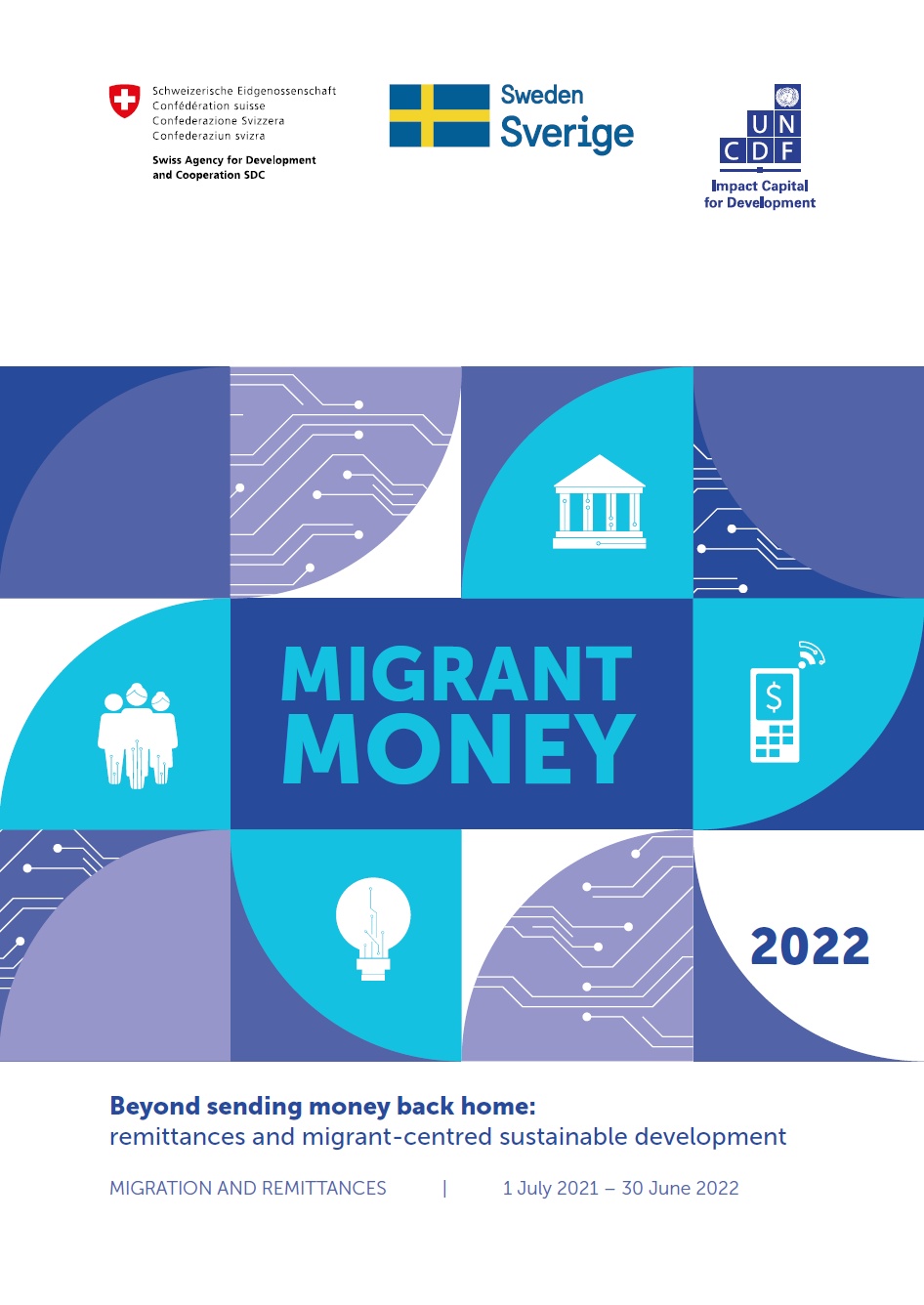Please find the French and Spanish versions of the Annual Report 2022 below:
For the 281 million people around the globe who send over US$600 billion as remittances to families in low- and middle-income countries, this remittance money plays a vital role in the financial development of their families. Despite the importance of remittances, they have remained stuck in a couple of inefficient models. Our work at UNCDF’s Migration and Remittances Programme starts from understanding the issues at hand.
At the moment, remittances are subject to inconsistent policy considerations within a country across regulators and line ministries, often differing or contradictory regulations between countries, varied degrees of development in the infrastructure around payments and settlements, distinct licensing requirements for who can be in the money transfer business, unique requirements for acceptable forms of identification for senders and receivers, and many other disconnects. All these challenges around remittances—the inefficiency of over-the-counter models, the persistence of unregulated informal flows, the transaction costs—require country, regional and multilateral cooperation among both the public and private sectors to be able to step away from these complexities and contradictions and towards a coherent framework that can allow migrant money to flourish.
UNCDF proposes a reimagining of migrant money in a way that unlocks its true power—as much more than just a way to move funds from point A to point B, and in fact as an on-ramp to full financial inclusion for that 4 percent of the globe’s people. Our work in this area is informed by UNCDF’s overarching mandate: access to inclusive financial systems for low-income people worldwide. With the support of the Swiss Agency for Development and Cooperation (SDC) and the Swedish International Development Cooperation Agency (Sida), the work of our Migration and Remittances Programme, as summarized in this annual report, has engaged partners in the public and private sectors at the global level (multilaterals, standard-setting bodies and global money transfer operators), regional level (regional economic communities and monetary unions) and country level (line ministries, regulators and financial institutions) to address constraints at the ecosystem, institution and product levels. This aims to transform the policy, regulatory and innovation landscapes and thus to start truly meeting the needs of migrants and their families.
The Migration and Remittances Programme is part of UNCDF’s inclusive digital economies (IDE) practice of Leaving No One Behind in the Digital Era (LNOB) strategy, which is based on over two decades of UNCDF experience in facilitating access to affordable finance to low-income people, especially through digital channels, in Africa, Asia and the Pacific. This vision is vital to promoting digital financial inclusion towards the Sustainable Development Goals (SDGs), including SDG 1 against poverty, SDG 5 for gender equality and SDG 8 for decent work and economic growth, while SDG 10 explicitly calls for remittance transaction fees to be lowered to a maximum of 3 percent and SDG 17 calls for improving the volume of remittances as a proportion of GDP. Our goal is to contribute to inclusive digital economies that support women and men migrants and their families towards greater financial inclusion, resilience and equality.
To do so, we operate in four interlinked workstreams: (i) enabling policy and regulations, (ii) open digital payment ecosystem, (iii) inclusive innovation, and (iv) empowered customers. Our core strategies are embedded across those workstreams: gender is mainstreamed by the programme and its partners; learning, insights, data and research are practised and applied at every step; and we perform effective advocacy and outreach to engage the wider industry ecosystem and policymakers in this migration and remittances agenda.
To learn more, download the Migrant Money Annual Report 2022 – Beyond sending money back home: remittances and migrant-centred sustainable development, 1 July 2021 – 30 June 2022.
